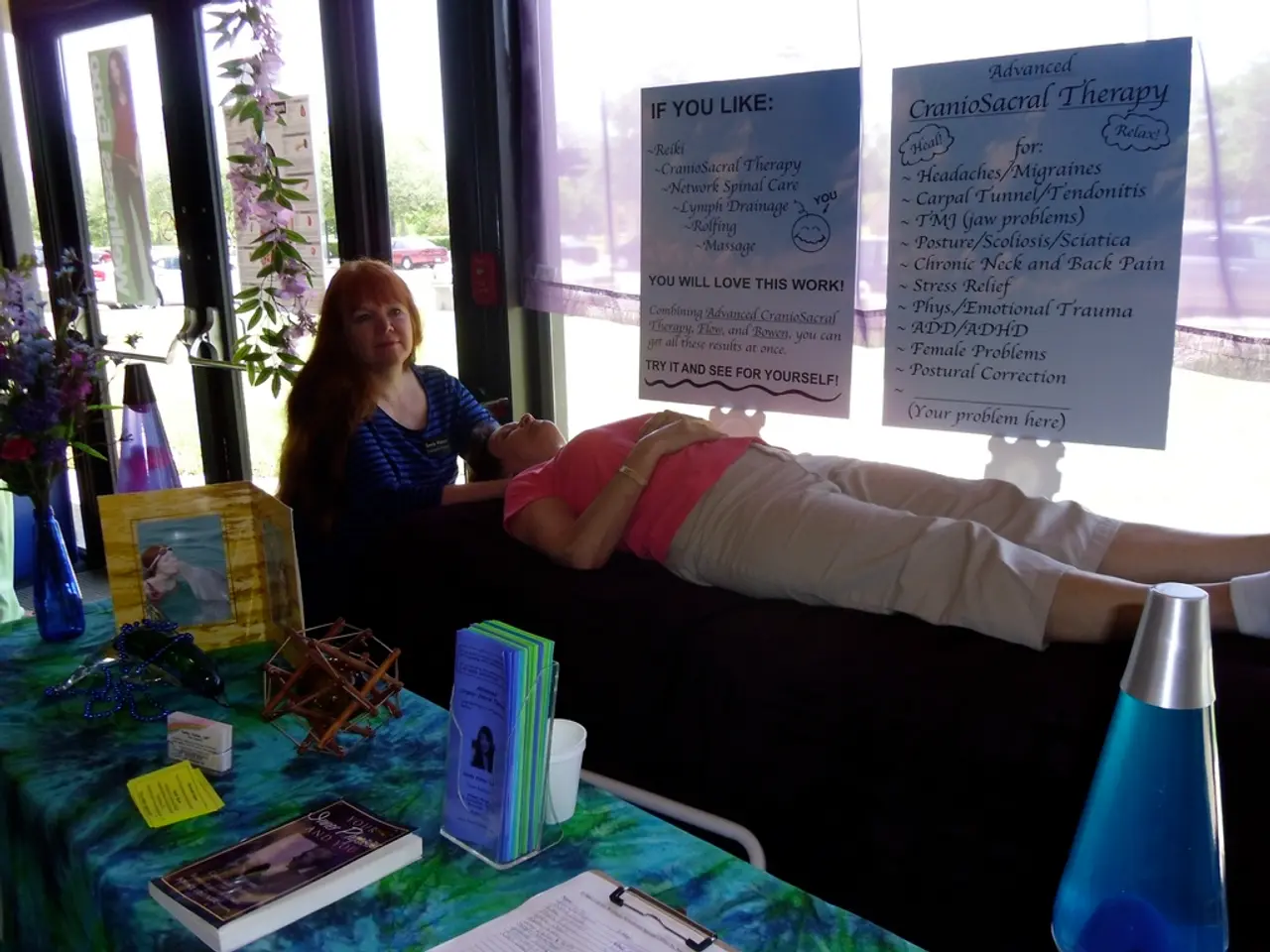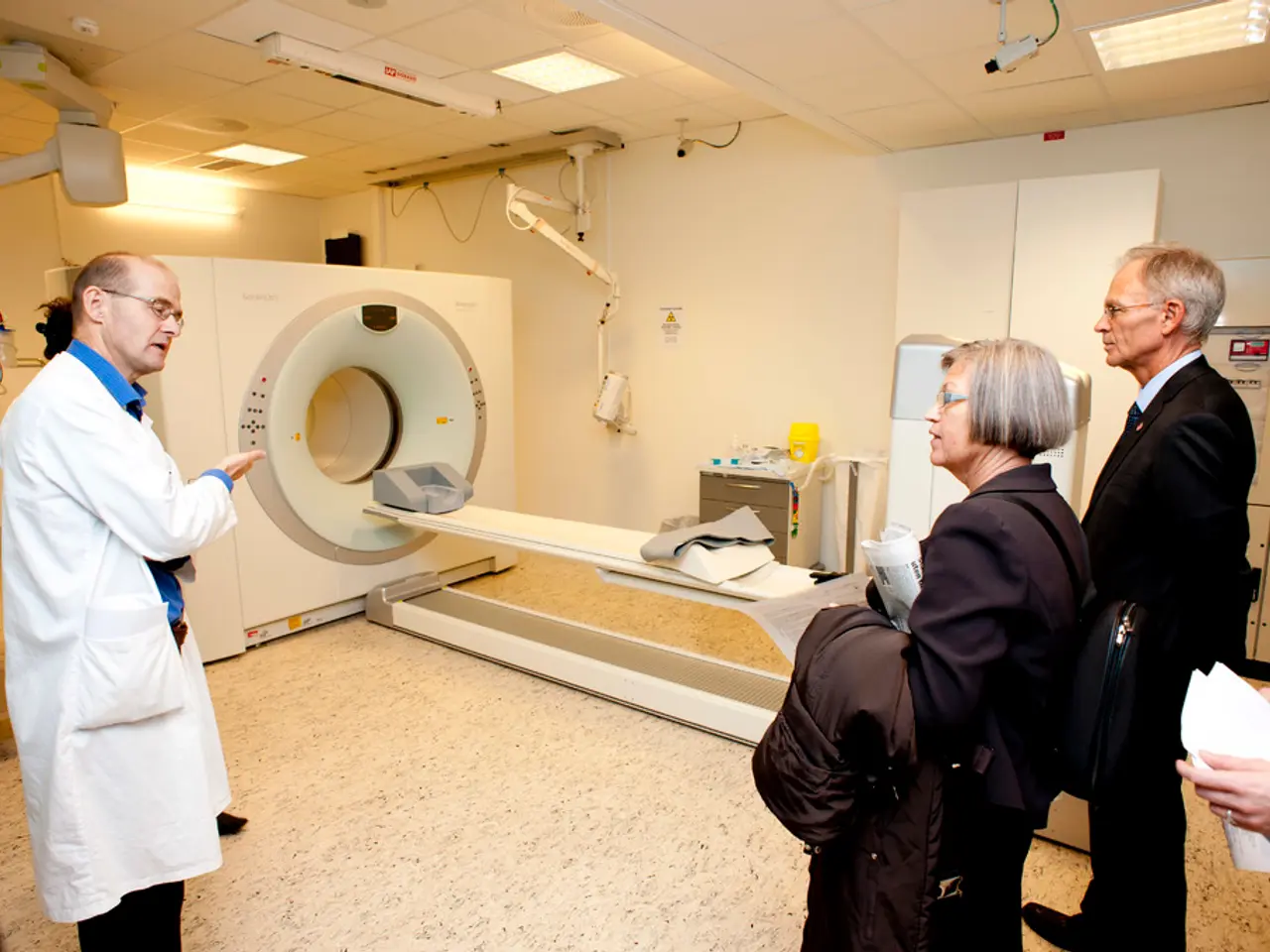Back pain in the upper right region: Reasons, treatments, and preventive measures
Upper right thoracic back pain is a common issue that many people experience. This article aims to provide insights into the common causes, treatment options, and prevention tips for upper right thoracic back pain.
Common Causes
Upper right thoracic back pain can stem from various sources. Muscle strain or tension, often due to poor posture, overuse, or repetitive movements, is a common culprit. This strain can affect muscles like the trapezius or rhomboids.
Another cause is vertebral compression fractures, particularly in older adults with osteoporosis or after trauma such as falls or accidents. Facet joint arthritis, caused by wear and tear of the small joints in the spine, is another possible reason.
Less commonly, nerve compression or irritation due to spinal misalignment, disc issues, or joint problems can radiate pain into the upper back and shoulder. Infections, cancer metastases to the spine, or metabolic/bone disorders may also cause pain, usually accompanied by other symptoms.
Treatment Options
Treatment for upper right thoracic back pain often involves a combination of conservative care, physical therapy, chiropractic care, and lifestyle changes. Conservative care includes rest, heat and cold therapy, and over-the-counter pain medication if advised.
Physical therapy focuses on gentle stretching, strengthening the muscles that support the spine, and improving posture and movement patterns. Chiropractic care involves spinal adjustments, softwave or laser therapy, postural correction, and functional assessments to target the underlying cause of pain.
In cases of vertebral fractures or severe arthritis, more specialized medical interventions or surgical evaluation may be required.
Prevention Tips
Preventing upper right thoracic back pain involves maintaining good posture during sitting, standing, and daily activities, staying active with low-impact exercises, avoiding repetitive overuse of the back muscles, and making ergonomic corrections, especially for people working long hours at desks or using mobile devices.
Examples of Exercises and Techniques for Prevention and Relief
- The shoulder extension, bottom-to-heel stretch, and sitting back extension are examples of exercises for upper right back pain.
- Lifting objects safely and correctly, taking regular breaks, maintaining good posture, and avoiding injury during sports are techniques to reduce the risk of upper right back pain.
When to Seek Medical Attention
If upper right back pain does not go away after a week or is accompanied by other worrying symptoms such as muscle weakness, bladder issues, tingling, or numbness, it is essential to seek medical attention. A healthcare professional will ask about a person's medical history, recent injuries, and the pain itself to determine the cause of upper right back pain.
In rare cases, a pulmonary embolism, a blood clot in the lungs, can be a potential cause of upper right back pain. Spinal infections can also trigger upper right back pain and require medical interventions such as antibiotics or antifungals.
- Diabetes, migraine, and depression are common chronic diseases that can exacerbate upper right thoracic back pain, making management and recovery more challenging.
- Bipolar disorder, a mental health condition, can lead to poor lifestyle choices and physical inactivity, contributing to the development of obesity and osteoarthritis, which are related to upper right thoracic back pain.
- Type 2 diabetes, specifically, is associated with higher rates of osteoarthritis and osteoporosis, potentially leading to vertebral compression fractures and increasing the risk of upper right thoracic back pain.
- Chronic conditions like psoriatic disease and HIV can cause inflammation and joint damage, increasing the likelihood of developing psoriatic arthritis or osteoarthritis in the upper right thoracic area, leading to pain and discomfort.
- AQ, a predictive test for Alzheimer's disease, may be useful for identifying individuals at increased risk for this neurodegenerative disorder, which can present with back pain due to the overlapping symptoms of muscle tension and aging.
- The science of fitness and exercise plays a crucial role in managing chronic-disease-related back pain, as regular physical activity can help reduce symptoms and improve overall health and wellness.
- CBD, a compound found in cannabis, has been explored for its potential benefits in managing chronic pain, including back pain, owing to its anti-inflammatory and analgesic properties.
- Crohn's disease, a gastrointestinal disorder, can lead to inflammation and joint pain in various locations, including the upper right thoracic area, necessitating proper medical-conditions management and potentially influence fitness-and-exercise choices.
- Incorporating a prep plan, such as ensuring good ergonomics and proper lifting technique while doing routine activities, can help maintain a healthier spine and reduce the risk of developing upper right thoracic back pain.




